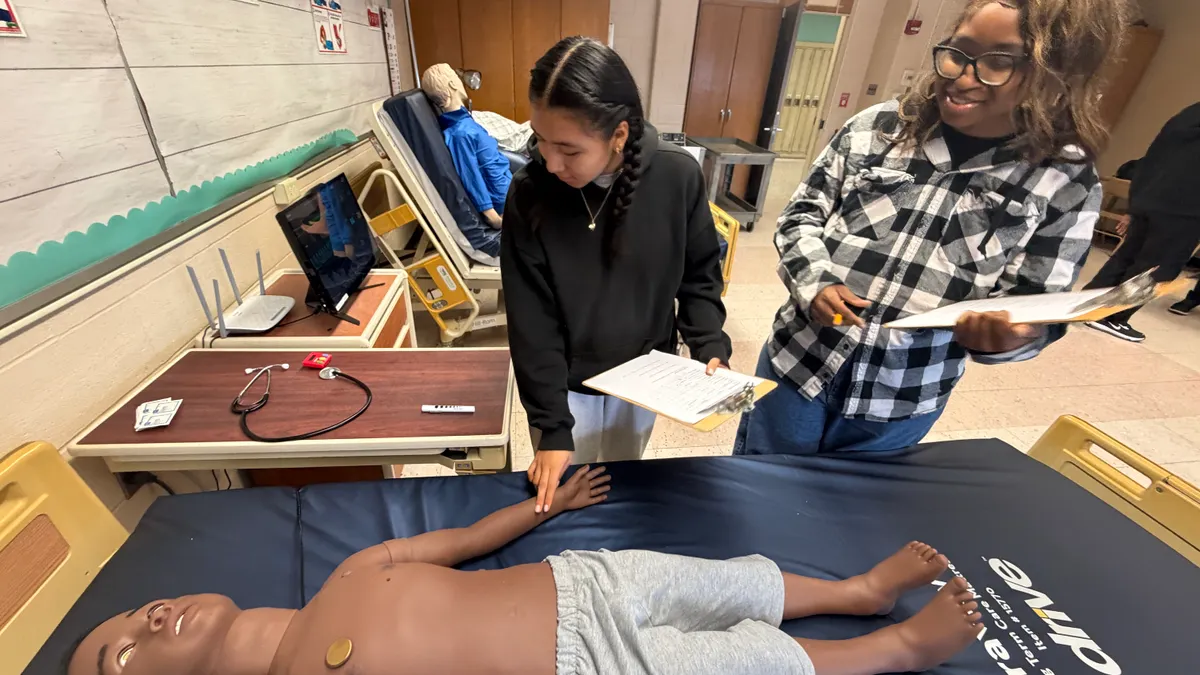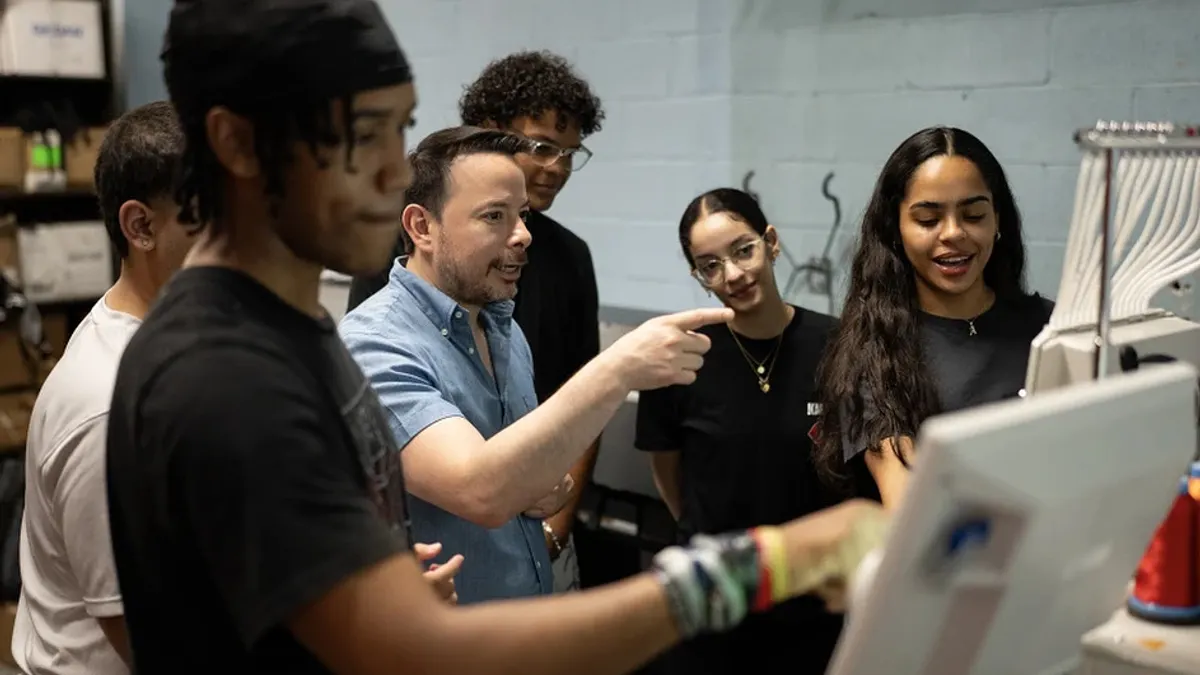Tan Huynh looks at the big picture when teaching English language learners (ELLs). An ELL himself, Huynh has dissected the art of infusing a second language into the first by teasing out specific strategies. The Philadelphia native then enhances the understanding of language by building context.
An ELL teacher at the private Saigon South International School in Vietnam, Huynh injects meaning into words to bring the topic to life in ways that his students understand. For example, at the secondary level, he will use a writing prompt such as "How did Rosa Parks fight injustice?"
“I give them the topic sentence because students often say, ‘I don’t know what to write about,’” he chuckled.
He then gives them vocabulary words, or a “word bank,” that they can learn and then use to respond to the prompt. In this case, words like injustice, prejudice, illegal, bus and unfair all come into play, along with transitional words including although, when and after.
Taking this bigger approach to ELL brings understanding into focus, which is the main reason behind the second language: to better understand the world.
With younger students, educators can start by teaching them to summarize, said Huynh, who also publishes a blog on ELL best practices. For example, "The Three Little Pigs" story can be broken up into parts.
“We read the text and find the noun,” he said. “It’s who, what, when, where, how and why. Who wanted to eat the pigs? The wolf. Why? Because he was hungry.”
Huynh said it’s important to summarize the text because students tend to want to copy the sentence. Forcing them to answer the above questions gives them the opportunity to make connections in the language, and that’s when understanding really occurs.
The school Huynh teaches at is attended by children of diplomats, with about 80 native languages spoken in total. He uses the same techniques regardless of the language, as he believes that learning English all boils down to the same ideas: reading, writing and grammar.
Growing up in Philadelphia and teaching in New Orleans in the wake of Hurricane Katrina, he's had plenty of experience with students from lower socio-economic areas, as well. On his blog, he offers tips that can be tweaked and applied regardless of the age or native language of the ELL.
Just say no to English-only
Huynh urges district administrators, teachers and even parents to not create an English-only environment for ELLs. Students build on concepts they already know, he said.
For example, they already know about how friction works, he said. “I don’t need to teach them what friction is and demonstrate it. I just teach them the English word for it.”
In San Jose Unified School District, where the learner population is about 20% ELLs, the art of leveraging students' primary language has been used for 30 years. Teaching students to read in their native language is a research-tested strategy, said Margaret Petkiewicz, interim principal at Gardner Academy in the district.
“The higher the level of literacy they will achieve in their primary language, the higher they will advance in English,” she said. “Research shows that teaching them to read in Spanish first will help them read in English. We’ve been doing that for 30 years, and it is also done in Florida, the Midwest, and Canada and the Quebec area.”
As the ELL student advances through the grades in SJUSD, he or she will be exposed to progressively more English until they reach 4th grade. Then all instruction is taught in English. It’s important to note that Petkiewicz is referring to SJUSD’s Structured English Immersion and Academic Language Acquisition programs, and the district also has a two-way immersion program that teaches both ELLs and Spanish language learners.
Claudia Salinas, a former ELL elementary teacher in Dallas, says scaffolding — the practice of teaching a student a concept that's just outside of their own abilities and assisting them until they're ready to reach that stage on their own — is an effective tool that utilizes the native language to bridge the gap with the second language. Using a new word or concept and then giving the students some time to make the connection brings the idea home.
Cognates are another tactic to use when building upon existing language, said Salinas, who now is the vice president of English learning at Curriculum Associates. Some words, like delegate, have the same meaning and similar sounds in both English and Spanish.
Providing terms that students already understand builds on their primary language, she said. For those reasons, retaining the native language is important — but the trend is heading in the opposite direction.
“Many of the Spanish speakers don’t have the high levels of Spanish now that they used to have,” said Zoila Esquivel Moreno, district English learner instructional coach at SJUSD. That forces educators to change gears because some students don’t have a strong command of either language.
The power of poetry
The SJUSD uses poems to help guide ELLs through making connections in English, said Esquivel Moreno. The students are given a poem to highlight a word or sound or letter. They then meet in groups of four and work on the sounds and letters together.
"Instead of just memorizing, there is meaning behind it," Esquivel Moreno said. "It lets them visually decode, discriminate within context and gives them foundational skills to move them forward in a way that will stick with them."
Poetry can also be a fun way for students to construct phrases and sentences. Strategies like having students cut words out of magazines and reconstruct them in meaningful ways allows for creativity and the formation of connections.
Academic language is important
Salinas also urges educators to teach students to speak correct academic English. “Have students make connections using proper English,” she said. “They could say that 'it covered the table,' or 'the whole table was covered.' There are different ways to say things, and they are both true. It helps build that language using precise vocabulary.”
Academic language is a concept all kids struggle with, Huynh said. “Academic language is invisible,” he said. “A lot of students can speak English, but they need be able to do it with academic language. They need to know what an ecosystem is and pull out the vocabulary, like deer, fox or raccoons.”
“Speaking a language to interact comes quickly,” Huynh added. “But without academic language, they don’t know how to talk about what is going on, what the nouns are doing.”
Collaboration brings concepts together
Huynh also encourages educators to collaborate. “The administrators need to make time for EL teachers to work together to bridge gaps,” he said.
This technique is especially helpful when working across different disciplines. Teachers in the Charlotte-Mecklenburg Schools math department, for example, work closely with ELL educators. Often, the ELL teachers can tie math words into their own lessons so students are hearing the new academic terms, like fractions, in both math and in their English learning class, solidifying the meaning.
Ultimately, crossing language barriers comes down to inclusion and having a better understanding of the world, Huynh said.
“It’s about reading. It’s about being able to talk about and understand history,” he said. “It’s not just about knowing the name Rosa Parks. It’s about being able to communicate what Rosa Parks, or any other important historical figure, did. And why.”


















